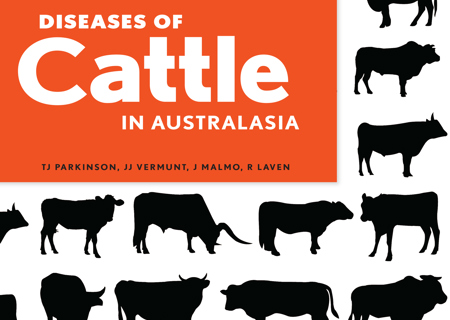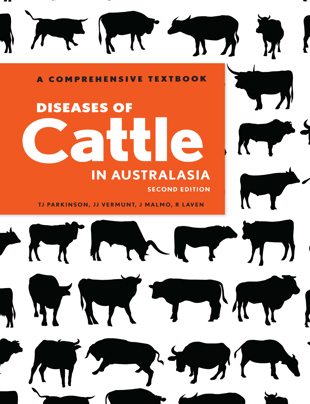Q1: This is the revised edition of a book first published in 2010. It was a thumping 872 pages and no doubt a major exercise. What made you all agree to reconvene and to update it?
The first edition of this textbook has been and still is widely used in Australia and New Zealand, and many cattle veterinarians have asked us when we were going to update it. We all considered it to be a worthwhile project, so agreed to work towards a second edition.
Q2: How long has it taken, from the time you all agreed to commit to the project?
Approximately two and a half years from the time we agreed to complete the second edition.
Q3: It’s grown considerably in the updating and is now over 1000 pages. Can you summarise the new material?
Extra material has been added in the area of mastitis, reproduction and lameness, as well as new material on emerging diseases such as Theileriosis and Mycoplasma bovis infection in New Zealand. There has also been considerable updating of many other topics such as rumen acidosis, gastrointestinal parasitism, calf and heifer rearing, dropped hock syndrome/flying scapula syndrome, and swede-induced hepatic disease/photosensitisation, amongst others. Furthermore, many new illustrations have been included in the text.
Q4: You have assembled a large team of contributing writers with impressive credentials. What were you looking for in contributors?
We were looking for people who were regarded as being experts in their respective fields and who we believed would be able to add significantly to the existing text, write well and meet deadlines.
Q5: Why will a cattle vet find this book useful?
The book covers most of the work that cattle veterinarians in Australasia undertake. We believe it is practical, well-illustrated and easy to read. Overall, the first edition was extremely well accepted and used by cattle veterinarians in both Australia and New Zealand.
Q6: And why should veterinary students have recourse to it?
For the reasons stated above: it is practical, well-illustrated and easy to use. The format was designed to very much take into account how modern students learn. Students commented about the first edition that they found the end-of-subject summaries particularly useful as precis of the key issues on that topic
Q7: Are there any worrying trends for cattle health?
Large herd sizes and a move towards corporate farms certainly present some real challenges. However, they can also be seen as opportunities for the veterinary profession. The apparent increase in climate variability also makes it harder to manage cattle herds, particularly in relation to feed supply.
Q8: What was your process for working together on this?
The original lead author of each chapter would review, update and/or revise the chapter concerned and then pass it on to another author(s) for them to add additional information and refine the material as required.
Q9: What’s one new thing you learned in the course of working on the book?
We initially talked of a fairly rapid rewrite, but as we proceeded with developing the second edition it turned out to be a lot more work than was anticipated. The most important lesson from this has been to never underestimate the task of preparing a subsequent edition. Also, deadlines of submitting written text are rarely met.
Q10: Keen to do another edition in a few more years?
At least two of the main authors have more or less reached the end of their writing careers; therefore, the time has come for new and/or young blood to move with the next edition. However, we enjoyed the opportunity to have been involved in writing the first and second editions.


